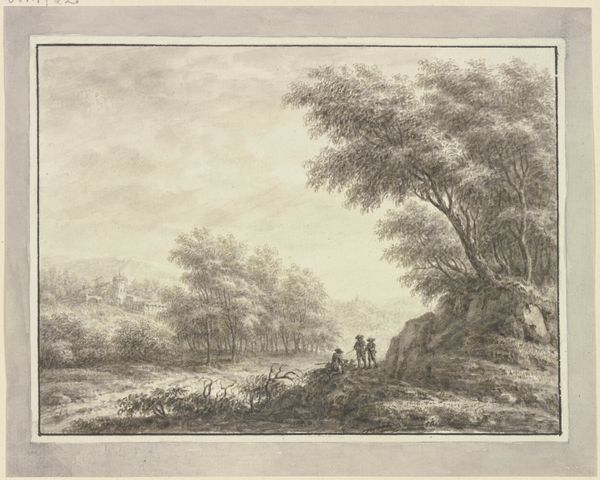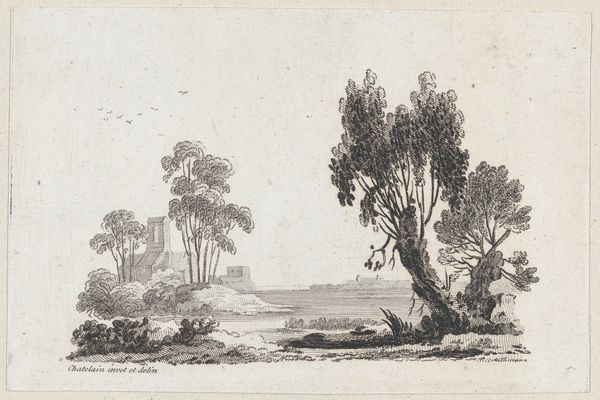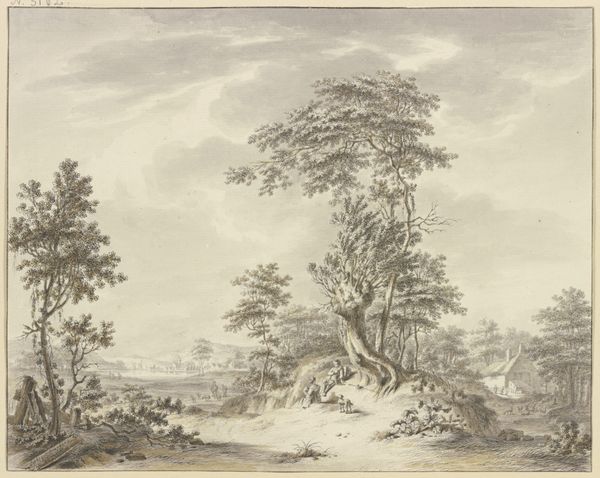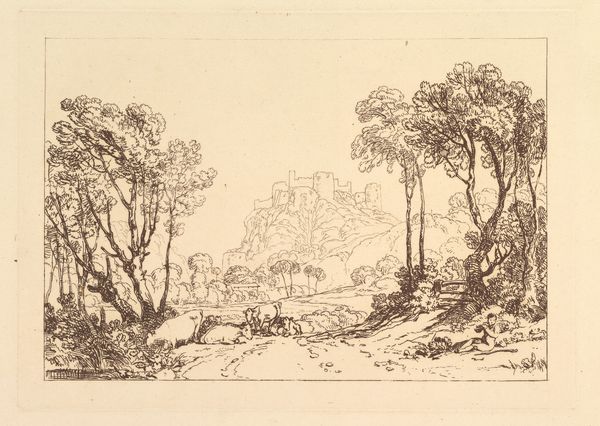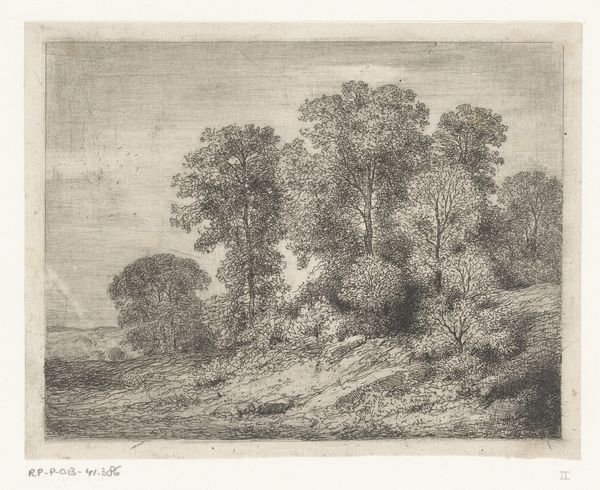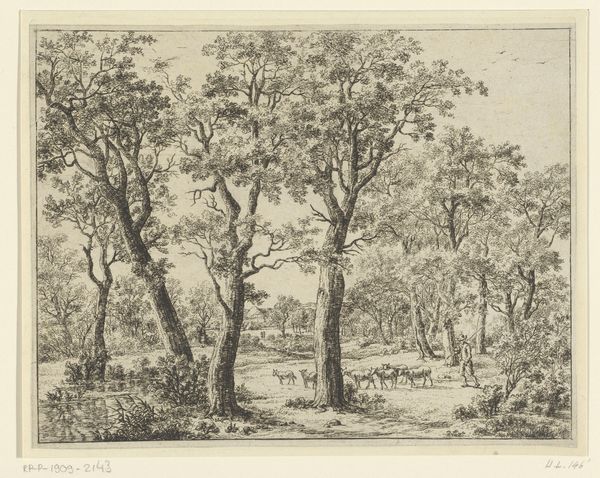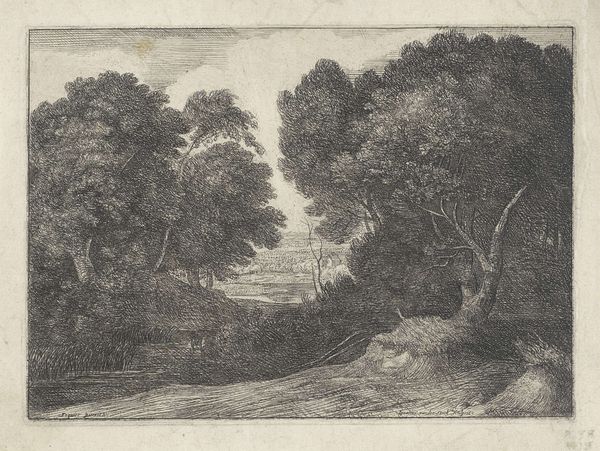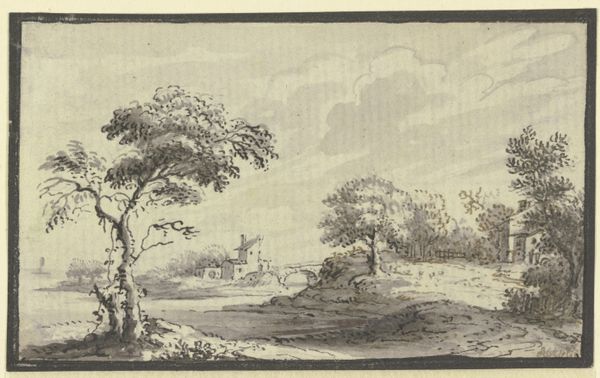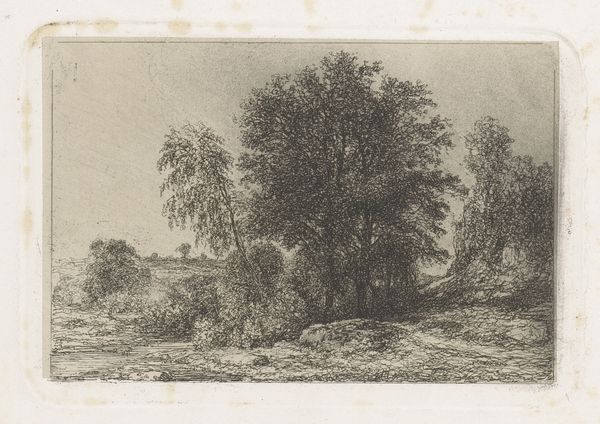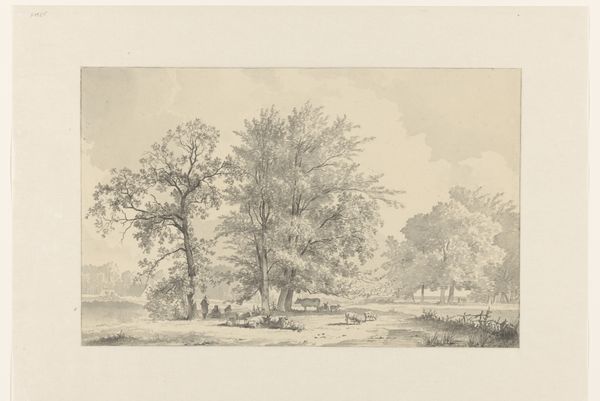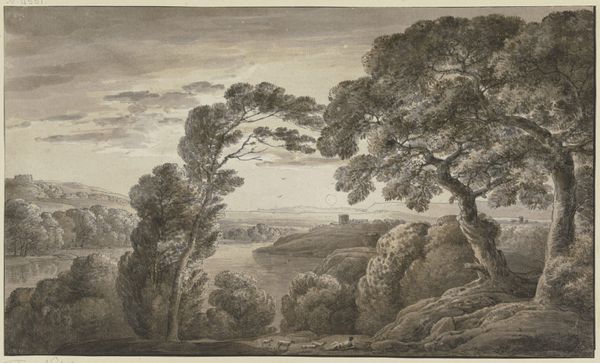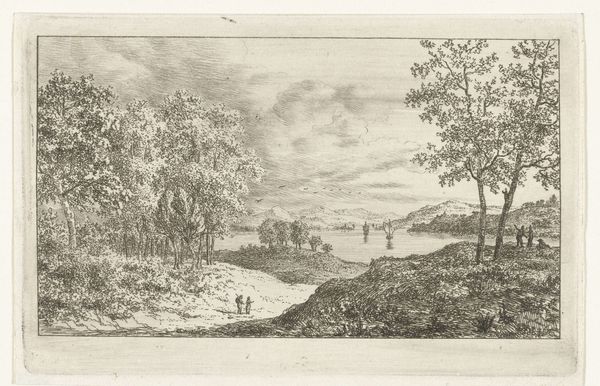
drawing, etching, paper, ink, graphite, pen
#
drawing
#
etching
#
landscape
#
etching
#
paper
#
ink
#
15_18th-century
#
graphite
#
pen
Copyright: Public Domain
Curator: Before us is "Baumgruppe an einem Flussufer, im Hintergrund ein Dorf," an etching in ink, graphite and pen on paper by Johann Caspar Zehender. Editor: My immediate feeling is one of quiet melancholy. The monochromatic palette, the spindly trees... it evokes a sense of transience, of observing a scene destined to fade. Curator: It's interesting that you say that. Considering Zehender's context—we think it was made somewhere in the 18th century—etching, as a reproductive process, was becoming increasingly sophisticated. The lines, achieved with a metal point on a prepared plate, granted opportunities for intricate detailing that reflect the increasing commodification and distribution of imagery. Look at the way he captures light! Editor: Yes, and I see those reproductive techniques used, or perhaps unintentionally reflected, within the subject matter of the work itself. The village in the background appears both connected to and distant from the foreground. Its blurred existence asks about the lives that fill those homes; whose labor allows this landscape to be admired? Is their future bound to this little grouping? Curator: An insightful observation! And if we consider the materials again, think of the paper itself – crafted from linen rags, potentially bearing its own history of labor. The labor and processes inherent in making something often influence the form that the content takes. Editor: And who would this artwork serve? Was Zehender thinking of the working people within it, or wealthy patrons appreciating their expansive properties from afar? To me, this composition poses a complex set of questions about class and accessibility that remains critical today. Curator: Well, I believe examining how these objects were circulated in a specific economy or cultural landscape sheds light on how tastes were developed and how that shaped our understanding of what art could or should be. Editor: True, these reflections on process enrich and perhaps question that established value. What histories are revealed through exploring an artwork's production and consumption? Food for thought!
Comments
No comments
Be the first to comment and join the conversation on the ultimate creative platform.
